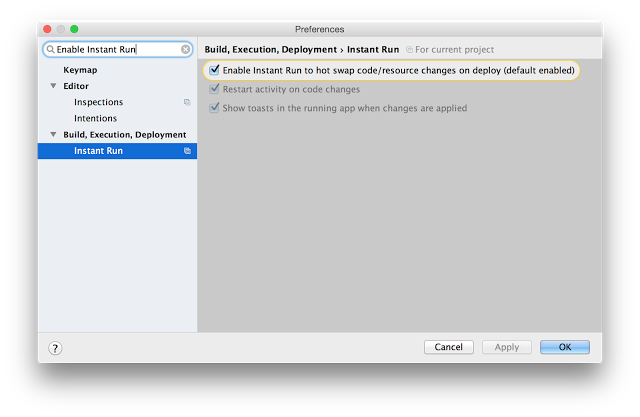

- #Android studio preference manager get context android
- #Android studio preference manager get context code
If not explicitly defined, Android creates a default application object for your application.Īn activity is the visual representation of an Android application.Īn Android application can have several activities.Īctivities use views and fragments to create their user interface and to interact with the user.Ī service performs tasks without providing an user interface. It is the last component which is stopped during application shutdown. Android application components ComponentĪn Android application can have one Application class which is instantiated before any other Android component. You can define the following components in your configuration files: Table 8. temperatureconverter import import android.os.Bundle import import import import public class MainActivity extends Activity Īn Android application (app) is a single installable unit which can be started and used independently.Īn Android application consists of configuration files, Java source and resource files. You access them via an InputStream object.ĭefines the actions which can be used in the toolbar of the application. XML files with layout descriptions are used to define the user interface for activities and fragments.įiles which define the appearance of your Android application.ĭefines animations in XML for the animation API which allows to animate arbitrary properties of objects over time.Īrbitrary files saved in their raw form. In a separate file, e.g., strings are defined in Used to define strings, colors, dimensions, styles andĪrrays of strings or integers via XML files. Images (e.g., png or jpeg files)or vector drawables or XML files which scale automatically with the density of the Android device Import 7.widget.The following table gives an overview of the supported resources and their standard folder prefixes. It will Show up on top and will reappear even if you kill and reopen the app. Step 5) Let’s create an Input and a Button to save a value in preferences.Īfter some drag-drop in activity-layout added a text input and a button which will look like this. Our “PreferenceHelper” Class will look like this Step 4) Now we will create a new Class “ PreferenceHelper” having getter and setters for preferences. preferences = getSharedPreferences( getPackageName() + "_preferences", MODE_PRIVATE)

Step 3) Get instance of getSharedPreferences method providing name and MODE. public static SharedPreferences preferences

#Android studio preference manager get context code
Step 2) In MainActivity add below line of code to above OnCreate method. Step 1) Create a new app with MainActivity. Using this method you can SET or GET preference literally from anywhere We will only discuss the best approach to use Shared Preference in application from anywhere inside your app. So here we will not go deep into context understanding or preferences documentations. Shared preferences is really a cool thing if we want to save some handy information by the user on a device even if an app is killed. During android development, especially for a beginner like me the creepiest thing which I felt was Handling Contexts.


 0 kommentar(er)
0 kommentar(er)
